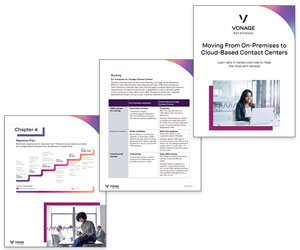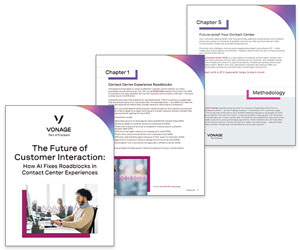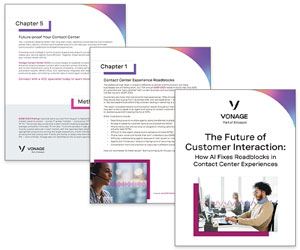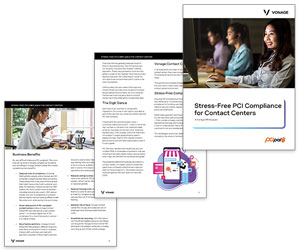Vonage has announced new research revealing that about half (47%) of consumers worldwide have increased their use of digital channels to engage with businesses and service providers over the past 12-18 months and 87 percent expect to maintain or increase this level in the next 6-12 months.
Further, consumers’ preference for connecting with businesses using video has soared by 300 percent since January 2020, while preference for messaging apps such as WhatsApp, Facebook Messenger and Viber, has doubled.
Vonage’s 10th Global Customer Engagement Report, based on a survey of 5,000 consumers from 14 countries, uncovered just how much the pandemic accelerated the global adoption of newer communications channels while increasing fragmentation in channel preferences, especially in the ways that consumers interact with organizations.
The research highlights changes over the past two years that would have been impossible to predict, but reinforce the need for businesses and service providers to transform their customer engagement strategies to become more agile and adapt to permanent changes accelerated by the COVID era.
Consumers who embraced new and emerging channels of communication during the pandemic did not revert back to old habits. Customer engagement has permanently changed and there will be no return to the pre-2020 era. The usage of digital channels (video, chatbots, non-SMS messaging apps, etc.) has grown considerably, while more traditional channels (mobile voice calls, email) have held steady.
“COVID-19 has fundamentally changed how businesses operate and how consumers interact with those organizations,” said Joy Corso, Chief Marketing Officer for Vonage.
“Our research shows that digital channels have rapidly emerged alongside traditional methods of communication, with sharp and sustained growth in video, chatbots, app-based messaging and calling, while email and traditional voice calls remain relatively status quo.
“This underscores the need to connect with and engage with customers in multiple ways, in their preferred modality. We are in an age where customers expect ultra-fast, seamless and dynamic communications and engagement.”
Vonage explored some of the customer service hurdles that surveyed consumers reported and the business impact of these frustrations.
For example, 46 percent of consumers are very likely to stop buying from a business or using its services if their calls repeatedly go unanswered with no other channels available for help. This highlights the importance of secondary and tertiary choices for communication; offering another channel such as live chat can ensure that the customer’s needs are still met.
Video Is the New Phone Call
To connect with consumers today, businesses must expand on their communications with less traditional channels and employ technology, such as APIs, that enable them the flexibility to embed programmable communications – voice, video, messaging and verification – directly into existing applications and workflows.
Since January 2020, globally, there has been a 300 percent growth in the number of people who prefer to connect with businesses via video.
Three in five consumers worldwide are video chatting with a business or service provider more now than they were 18 months ago, and four in five expect their video chats with friends and family to stay the same (55%) or increase even further (35%) during the next six months.
Video chat has become a mainstream addition to people’s everyday lives, with three-quarters of consumers using video to talk to friends and family. For one in five, this is a daily occurrence. Additionally:
- Consumers are using video chat to connect with healthcare services 50 percent more today than they were during the outbreak of COVID-19 in 2020. One in four use video chat in key healthcare scenarios including remote consultations, remote therapy, and describing symptoms.
- With the advent of widespread distance learning, 37 percent of consumers prefer video chat when learning and studying remotely with a tutor. This increases to 42 percent for engaging with other students and teachers in a virtual classroom. This trend will likely continue as more students participate in virtual learning environments.
- At work, 38 percent of respondents favor video calls when collaborating with their team or customers on an important project. Digital engagement while working increased for at least half of respondents in each region. LATAM and APAC saw a 75 percent and 65 percent increase respectively since the start of the pandemic.
The Might of the Messaging Apps
Emerging communications channels that saw an increase in preference include messaging via social messaging apps and chatbots. Consumer preference for messaging apps has doubled since the outbreak of COVID-19. Additionally:
- Consumers now use and prefer WhatsApp both to call and text more than any other messaging channel, beating even SMS and Facebook Messenger. In fact, WhatsApp is now 160 percent more popular than SMS. In EMEA, more than half of consumers have used WhatsApp to contact a business (52%), while in LATAM, this is higher still, at 89 percent.
- In North America, 34 percent of consumers call friends and family every day via messaging apps – up from 29 percent in August 2020. In LATAM, this soars to 62 percent.
Businesses must always be agile and ready to adapt to changes in the market, but the pandemic made the call for agility even louder. While a remote delivery of services is crucial to business survival today, that ability will mean little if the experience isn’t frictionless, seamless and embedded into the applications customers are already comfortable using.
Organizations that meet consumers on their communications channel of choice, while limiting frustrations, may emerge from this turbulent era stronger than before.
As the world leader in virtual care, Teladoc Health, Inc. enables embedded telehealth capabilities through its platform via the Vonage Video API:
“We have experienced a tremendous increase in usage of our telehealth solution as our healthcare providers continue to provide uninterrupted and critical medical care to their patients during the pandemic,” said Jeff Nadler, Chief Information Officer for Teladoc Health, Inc.
“With patients continuing to seek medical care from the comfort and safety of their homes, seamlessly embedded video chat capabilities enable our providers to ensure their patients have access to personalized, real-time care – from anywhere.”
AmeriSave Mortgage Corporation is able to power embedded, personalized customer connections throughout the loan process, all within the context of its existing applications, via the Vonage SMS API and Vonage Verify API.
“At AmeriSave, we rely on the use of advanced technology to provide low rates, transparent pricing, easy online applications and, most importantly, great customer service for our clients,” said Magesh Sarma, CIO for AmeriSave Mortgage Corporation.
“With Vonage, we have the ability to make our customer interactions even easier and seamless, with secure messaging capabilities that also provide us the capability to scale as we grow.”
This blog post has been re-published by kind permission of Vonage – View the Original Article
For more information about Vonage - visit the Vonage Website
Call Centre Helper is not responsible for the content of these guest blog posts. The opinions expressed in this article are those of the author, and do not necessarily reflect those of Call Centre Helper.
Author: Vonage
Published On: 10th Nov 2021 - Last modified: 16th Nov 2021
Read more about - Guest Blogs, Vonage






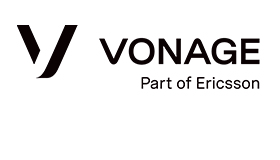 Vonage is redefining business communications, helping enterprises use fully-integrated unified communications, contact centre and programmable communications solutions via APIs.
Vonage is redefining business communications, helping enterprises use fully-integrated unified communications, contact centre and programmable communications solutions via APIs. 




